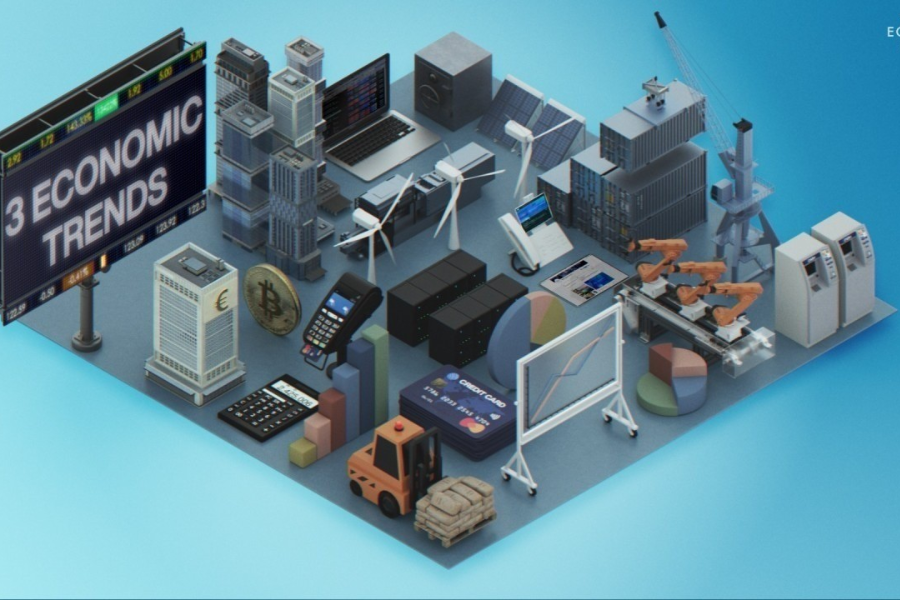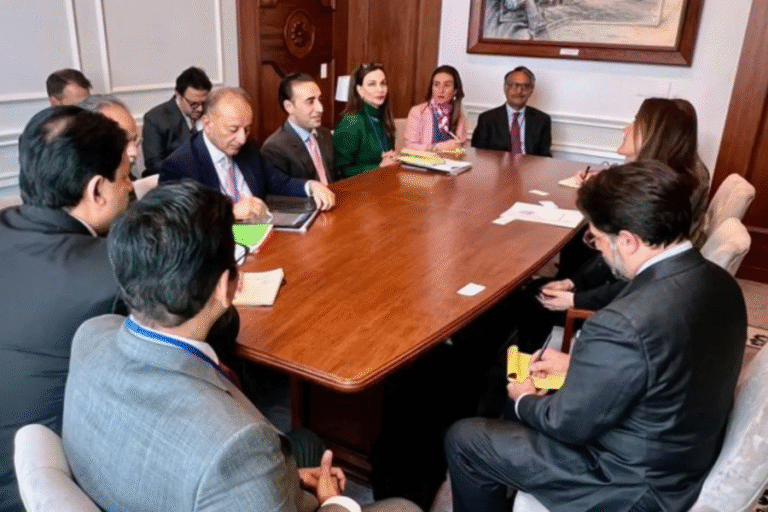Inside Today’s Economy: Trends You Can’t Miss – InvestorWeeklyNews Report
The global economy is evolving at a pace never witnessed before. From shifting labor markets and inflation patterns to the growing influence of technology and new financial ecosystems, today’s economy is complex, dynamic, and deeply interconnected. InvestorWeeklyNews brings you an in-depth report highlighting the most critical economic trends you need to watch right now.
Whether you’re an investor, entrepreneur, policymaker, or simply someone seeking financial clarity, this report is crafted to help you navigate the economic terrain of 2025 and beyond.
Inflation Remains a Balancing Act
Inflation is still one of the most closely monitored economic indicators around the world. While some regions have seen a decrease in year-over-year inflation rates, others are experiencing persistent pressure on prices. The challenge lies in balancing inflation control without hampering growth. Central banks, particularly in the United States, the Eurozone, and parts of Asia, have adopted cautious strategies, choosing to hold interest rates or implement minimal increases.
Consumers are feeling the effects at the checkout line. Groceries, rent, and transportation remain higher than pre-pandemic levels. Meanwhile, wage growth has not kept pace in many sectors, resulting in a squeeze on household budgets. Policymakers are facing the tough task of managing inflation expectations while trying to maintain economic stability.
The Labor Market Is Reshaping Itself
Labor markets worldwide are undergoing significant changes. While unemployment rates in many developed countries remain relatively low, the nature of employment is shifting. The rise of remote work, gig economy platforms, and freelance services has permanently altered how people engage with work.
Automation and artificial intelligence are also beginning to reshape industries at a foundational level. Roles that once relied on manual input are increasingly being supplemented or replaced by machine learning tools. In response, governments and private companies are investing in upskilling programs, vocational training, and education reforms to prepare the workforce for a tech-driven future.
A key trend to watch is the growing divide between high-skill and low-skill labor markets. Industries such as healthcare technology, cybersecurity, data analytics, and renewable energy are experiencing talent shortages, while lower-wage roles continue to face job insecurity and high turnover.
The Global Supply Chain Learns from the Past
The COVID-19 pandemic exposed critical weaknesses in global supply chains. In 2025, companies have re-evaluated how and where they source materials, components, and finished goods. The movement toward nearshoring and friendshoring is gaining momentum. Businesses are looking to partner with stable and politically aligned countries to avoid future disruptions.
This shift is especially evident in sectors like semiconductors, pharmaceuticals, and consumer electronics. While this restructuring adds resilience, it also increases production costs in the short term. Many companies are passing these costs to consumers, which continues to influence overall inflation.
Digitization and blockchain are being used to improve transparency and traceability across the supply chain. Companies are now more data-driven than ever, utilizing predictive analytics to manage inventory, forecast demand, and reduce delays.
Digital Currency and Blockchain Are Reshaping Finance
The rise of digital currencies and blockchain-backed financial systems is redefining global finance. Central Bank Digital Currencies (CBDCs) are being explored or piloted by more than 100 countries. These state-backed digital currencies aim to provide secure, fast, and transparent transactions while reducing reliance on traditional banks.
Meanwhile, cryptocurrencies like Bitcoin and Ethereum continue to attract both retail and institutional interest. Despite regulatory scrutiny and volatility, digital assets are being integrated into investment portfolios, remittance systems, and even real estate transactions.
Decentralized finance (DeFi) platforms are gaining traction as users seek financial tools that are independent of traditional banking. However, lack of regulation and concerns about fraud remain significant hurdles. Governments are racing to develop legal frameworks to govern this space while preserving innovation and investor protection.
Green Economy Investment Surges
Sustainability has become a cornerstone of economic planning. Governments, corporations, and financial institutions are increasingly committing to green projects and policies. Renewable energy is at the center of this transition, with solar, wind, and hydro investments hitting record levels.
Environmental, social, and governance (ESG) investing is no longer a niche segment. It has become mainstream, influencing trillions in asset allocation. Green bonds and climate-focused mutual funds are drawing strong interest, particularly from younger investors and institutional players.
The green economy is also driving job creation. From electric vehicle manufacturing to sustainable agriculture, entire new industries are forming, providing both economic growth and environmental benefits. However, the transition is uneven, with fossil fuel-dependent economies facing structural challenges that require long-term planning and support.
Real Estate Market Enters a New Phase
Real estate markets around the world are experiencing a mix of boom and correction. In many major cities, home prices have stabilized or declined after reaching unsustainable highs. Mortgage rates remain elevated due to inflation control policies, making housing less affordable for first-time buyers.
At the same time, demand for rental properties is surging. Investors are focusing more on multi-family units, student housing, and commercial-to-residential conversions. In emerging markets, infrastructure development and population growth are driving new urban expansion.
Commercial real estate, particularly in office spaces, is undergoing a transformation. With hybrid work models becoming permanent in many companies, demand is shifting toward flexible co-working spaces and smart buildings designed for sustainability and efficiency.
Consumer Spending Reflects New Priorities
The way people spend money is changing. Experiences, health, digital subscriptions, and sustainability-focused products are seeing increased demand. In contrast, non-essential luxury goods and traditional retail are under pressure. E-commerce remains dominant, but consumers are becoming more selective, focusing on quality, ethics, and value.
Buy now, pay later services and micro-financing platforms are also influencing consumer behavior, especially among younger generations. Personal finance awareness is rising, with more people using budgeting apps, robo-advisors, and investment platforms to manage their money.
Inflation and economic uncertainty have made consumers cautious. Brands that can demonstrate resilience, transparency, and genuine value are more likely to build long-term loyalty.
Geopolitical Tensions and Trade Realignments
Trade relationships are being tested as countries adjust their economic strategies in light of ongoing geopolitical developments. The competition between major powers such as the United States and China continues to shape global trade routes, tariffs, and manufacturing strategies.
Sanctions, diplomatic stand-offs, and economic alliances are impacting the flow of goods and capital. Emerging markets are stepping up as alternative trade partners, with regional agreements gaining more importance. The BRICS nations, for example, are expanding their economic influence through coordinated development initiatives and cross-border trade frameworks.
Economic nationalism is on the rise, with countries prioritizing local industry support and resource independence. While this trend offers strategic advantages, it also risks undermining the benefits of global trade and collaboration.
Technology and the Future of Money
Financial technology is revolutionizing how money is managed, moved, and multiplied. Mobile banking, peer-to-peer payments, robo-investing, and AI-driven advisory services are making financial tools more accessible to wider populations.
In regions with underdeveloped banking infrastructure, mobile money platforms are enabling millions to participate in formal economies. Meanwhile, smart contracts and tokenized assets are creating new pathways for investment and asset ownership.
As technology becomes deeply embedded in finance, questions around security, regulation, and ethics are becoming more pressing. Investors and consumers alike must stay informed to navigate this rapidly shifting environment.
Final Thoughts
Today’s economy is a moving puzzle of innovation, disruption, opportunity, and risk. The trends we’ve explored—ranging from inflation and labor shifts to digital currency and green investments—are not isolated. They are interconnected forces shaping the way we live, work, and invest.
Understanding these changes is essential not only for financial success but for participating meaningfully in a world that’s undergoing rapid transformation. At InvestorWeeklyNews, we remain committed to decoding these economic shifts with clarity, accuracy, and depth. Stay with us for ongoing reports, insights, and analysis that matter.





